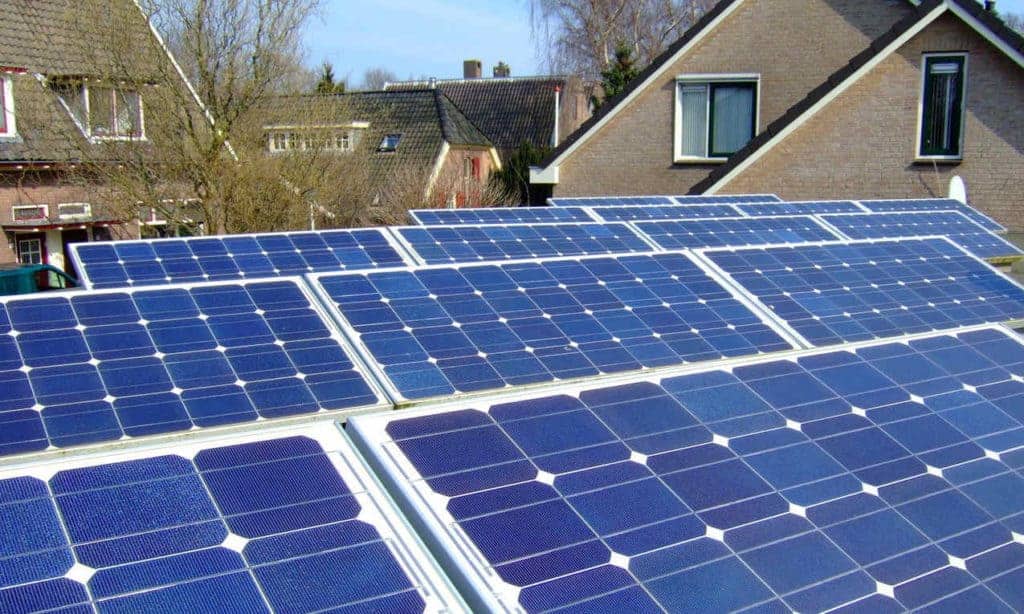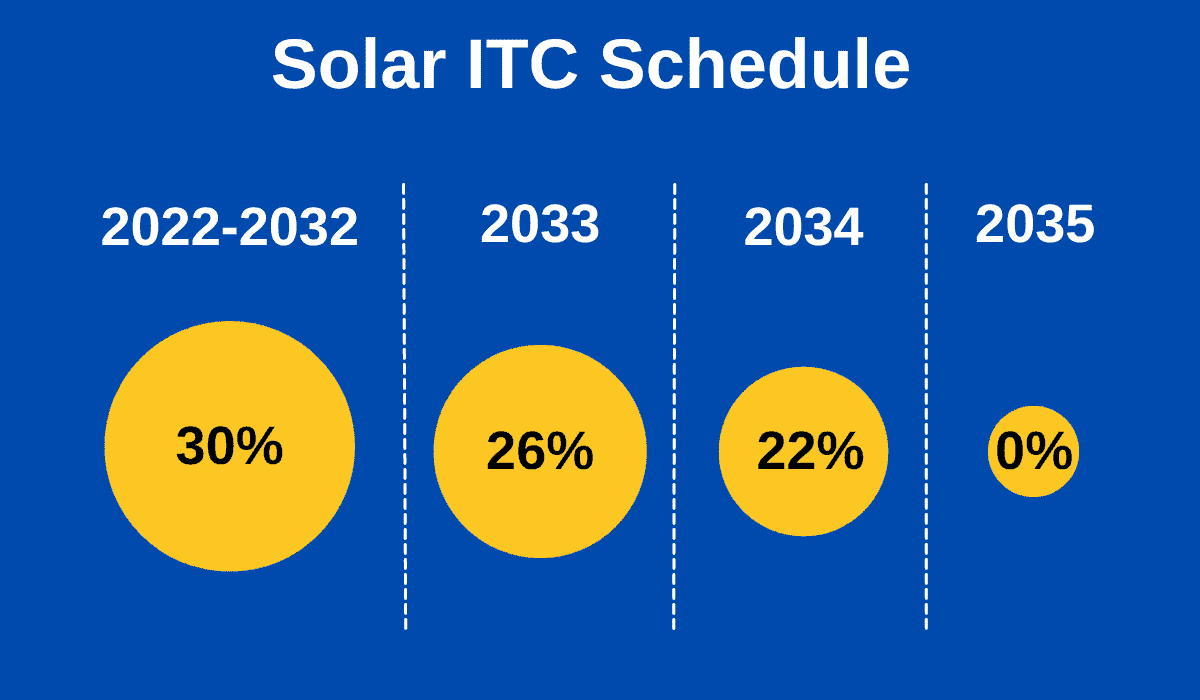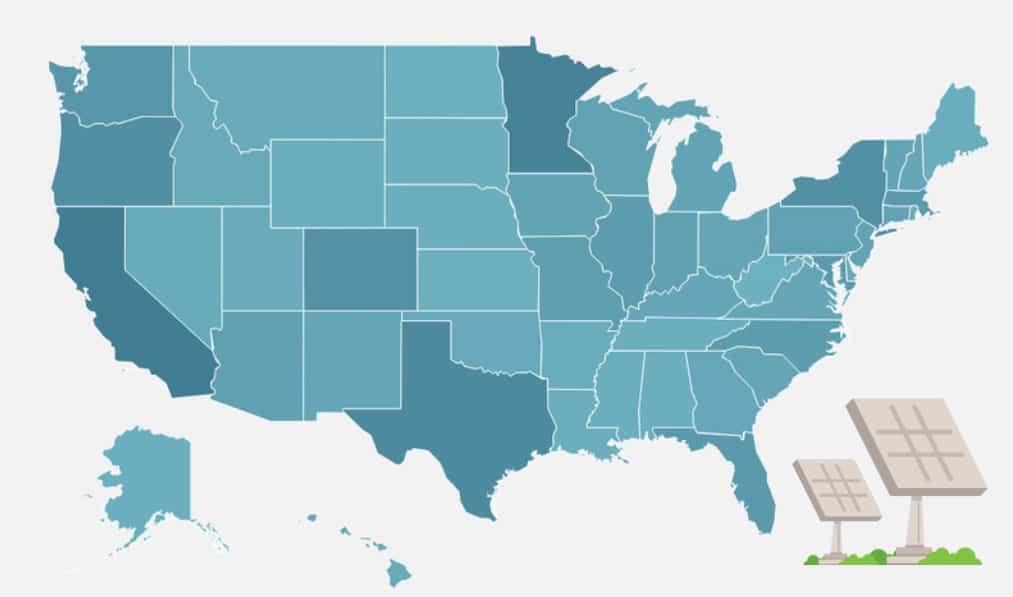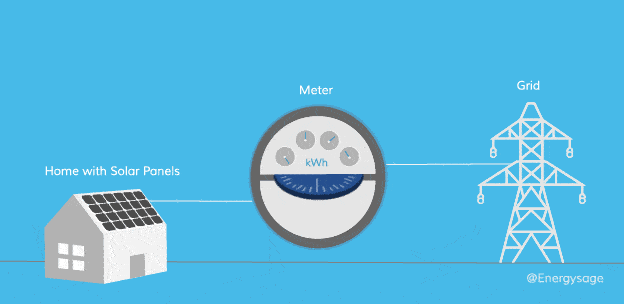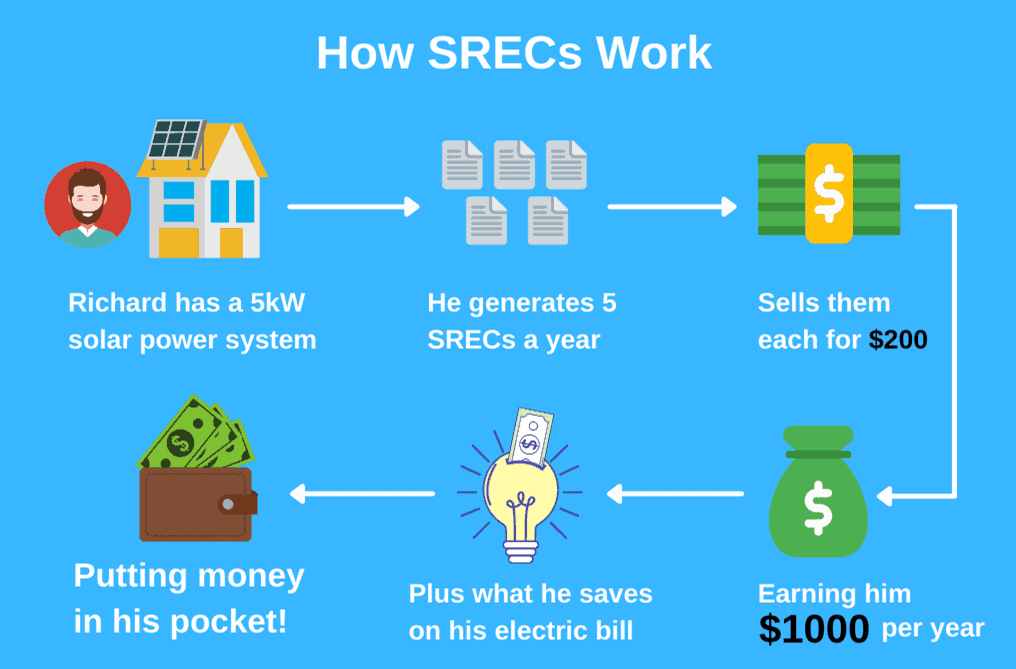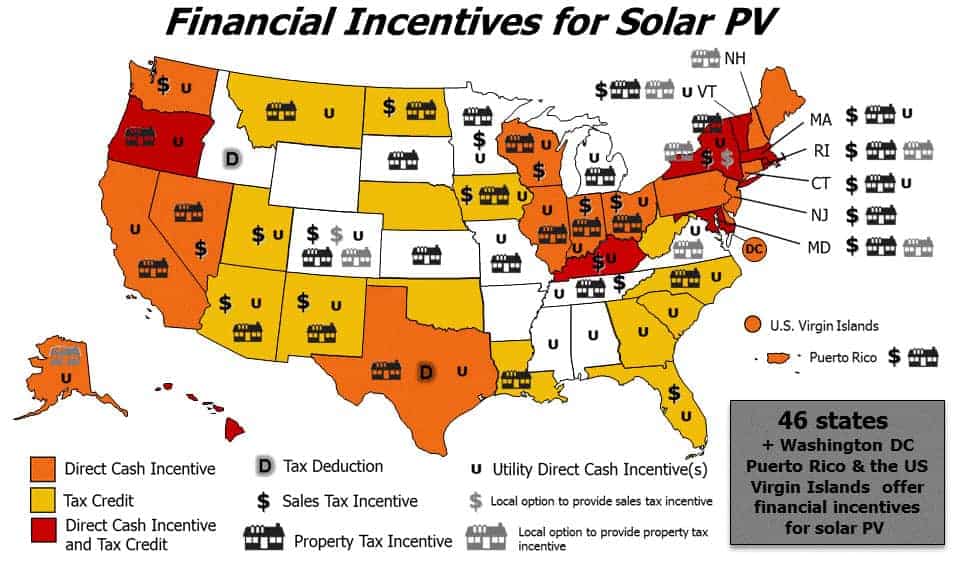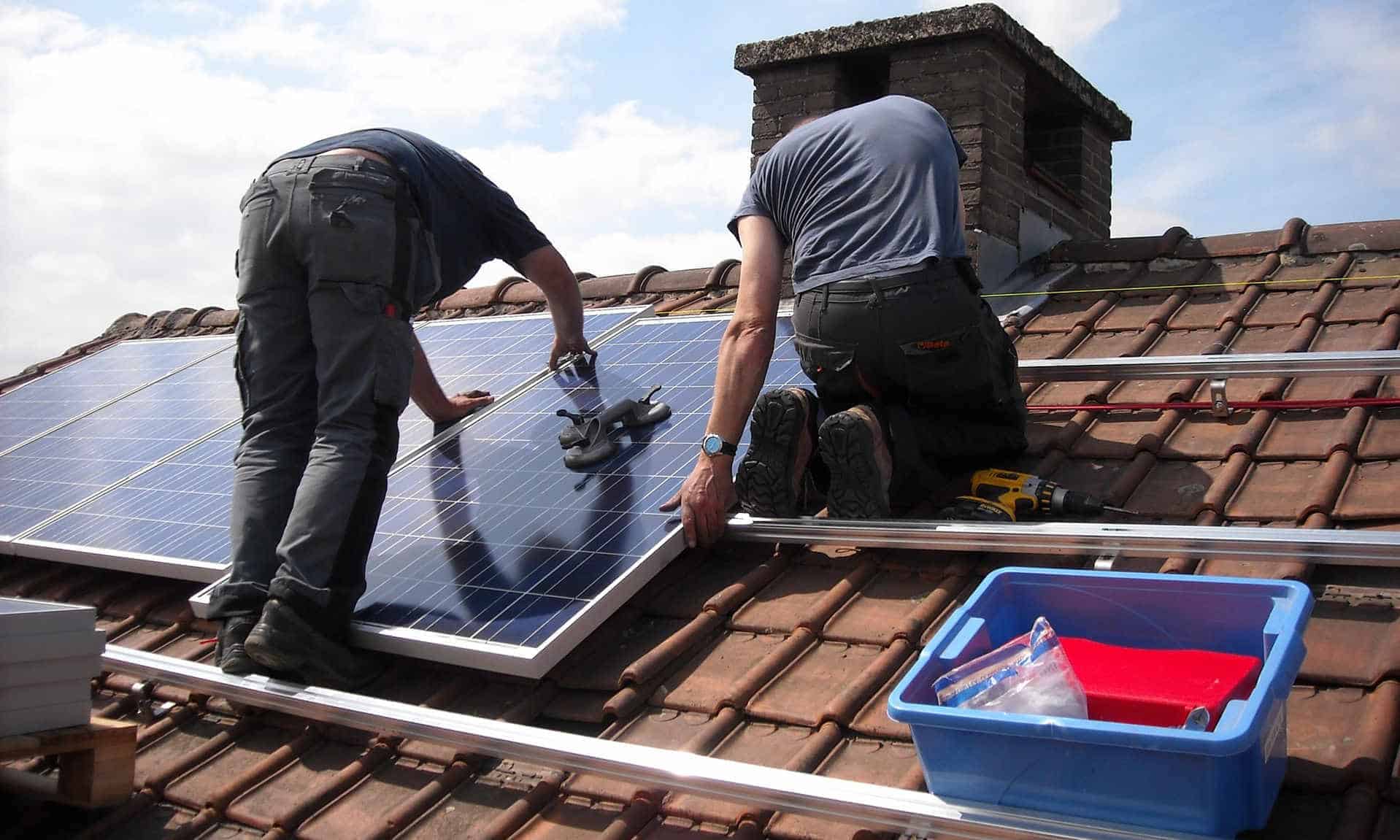I’ve been thinking about installing solar panels for a while now. Solar systems are becoming much more efficient, and it feels that the time is right to kit out my home with a renewable energy source that will save me money and help the environment.
I’d heard that there are ways to get government subsidies and maybe even get solar panels for free. When you look into the details, As you can probably imagine, the story is a little more complicated. But there are some excellent incentives from the government to help you get started with a solar system.
I’ve done a ton of research that I want to share with you about how to get free solar panels from the government.
What Kinds of Incentives Are Available?
The first point to note is perhaps an obvious one, but it’s worth saying. Nobody is just going to come to your house and install a solar system for free.
While there are lots of ways you can get financial help with the purchase of your solar system, it will take some careful planning, and you need to be aware of what is available to you before you get started with looking at designs. Let’s go through all of the different options that might be available to you.
What Kinds of Federal Solar Incentives Are Available?
The Residential Renewable Energy Tax Credit is a federal allowance that is available to all US homeowners. You can claim this tax credit when you buy a solar energy system. The allowance lets you credit up to 30% of your spending on the purchase and related installation costs of your solar system.
The residential renewable energy tax credit is a great way to offset some of your solar panel system costs against your earnings. If you don’t have enough earnings to offset the credit in a given year, you can also carry it forward.
Another good thing about this renewable energy tax credit is that you can apply the 30% discount to the cost of your solar system after taking any state-level rebates or incentives. What this means is that you have the opportunity to benefit from both federal and state incentives to help you with the cost of your solar system.
What Kinds of State And Local Incentives Can You Receive?
Most US states offer some kind of incentive scheme that helps you save money on your solar system. Here’s a summary of some of the different inducements you can benefit from.
State Incentives
At the state level, the incentives on offer are usually in the form of tax credits that work similarly to the federal renewable energy tax credit.
Remember that you can take the federal and state tax incentives together and roll them over if there is a surplus.
Local Incentives
Also, some cities, counties, and utilities offer direct rebates to help with the purchase cost of solar panel systems. These are becoming less common since solar systems are becoming cheaper and cheaper to buy. Below, I’ll show you how to find out if any are available in your area.
Loans
Loans are another incentive some states and utilities use to help you buy a solar system. Often these loans are offered at favorable interest rates and they can be a great way to start benefiting from solar power without making that big initial investment. Here’s an example of a solar system loan available in Colorado.
Sale of Electricity Through Net Metering
If you plan to connect your solar system to the local utility grid, you can sell them electricity that you don’t use through the net metering system. One form of solar energy production incentive is for utilities to buy your surplus solar-generated electricity at high rates.
Net metering is an effective system that allows the most efficient use of electricity in a given area. When you connect to the network and you’re not using much power, you can watch your meter run backward. Just imagine how satisfying that is!
Admittedly, this kind of subsidy doesn’t lower the purchase cost of your solar system, but it reduces your electrical costs still further and speeds up the time it takes to pay off the purchase of your solar system.
Solar Renewable Energy Credits (SRECs)
Some states have a particularly strong focus on renewable energy, and their local utilities are obliged to meet quotas regarding the amount of energy that they produce from solar and other renewable sources.
This requirement has given rise to the solar renewable energy credit (SREC). Households with solar systems capable of producing more than 1 MWh of electricity can claim SRECs. You can sell (SRECs) in addition to selling them your electricity. It’s a kind of extra reward for going with solar power.
Performance-Based Incentives (PBI’s)
Another way to make the operation of your solar system more economical is to take advantage of performance-based incentives (PBIs). These are a reward for producing a certain amount of energy through a solar system.
Your utility will agree to pay you for producing a set quantity of energy from their solar system, whether you use it in your own home or send it back to the grid. In this scheme, utilities are effectively paying you to use your own electricity.
What Kinds Of Incentives Are Available In My State?
The good news is that many states in the US offer some kind of incentive scheme that helps you save money on your solar system. The bad news is that it is complicated, and incentives differ from state to state.
Fortunately, there is an excellent resource that lets you find out what deals are on offer where you live quickly and easily. The DSIREUSA website is operated by N.C. Clean Energy Technology Centre at North Carolina State University.
This website has a very user-friendly setup to help you figure out what incentives are available to you. You can click on a map of your state to find out all of the incentives offered there.
Even better, you can enter your ZIP Code and see what’s available in your neighborhood.
You can be confident that the DSIREUSA offers good information since they receive funding from the US Department of Energy. The website gives a summary of each of the incentive programs and then directs you to somewhere where you can find out about it in more detail.
It’s Not All About the Purchase Cost
Now that we’ve taken a look at all the different ways to enjoy financial incentives for purchasing a solar system, you’ll see that the situation isn’t just about how to get free solar panels from the government.
What’s most important is to make sure you know about all of the different incentives that are available to you. These may be tax rebates, loans, grants, or bonuses for selling back the electricity they produce.
You also need to consider the money you’ll save from generating your electricity through a solar system.
The next thing to do is shop around and decide on which solar system would best suit you. Then you can use the cost of that system as a starting point.
Next, apply all of the incentives that are available to you in your area. You should be able to figure out how much money you’ll need to put down on your system and then how much you will save per year in electricity costs and ongoing incentives.
Going through the steps will let you work out how long it will take you to pay off the cost of your solar system through reduced energy bills. You can expect a pleasant surprise when you look at the price of a good solar system after incentives and how quickly you will have paid everything off through savings.
Related article:How Long Does It Take for Solar Panels to Pay for Themselves?
What To Do Next
So, while the government won’t buy your solar system for you, there are some excellent incentives and other benefits that can help you achieve impressive reductions in the cost of your solar system.
And it isn’t too hard to get detailed information on just what is available to you in your area. Here’s what you do;
- Enter your Zip code at the DSIREUSA website and see what incentives are available to you.
- Follow up and get all the details on the incentives that you find.
- Figure out what budget you have. Make sure to consider your savings in electricity costs and work out when you will pay off your initial investment.
- Only then start looking at solar systems, pick the right one for you (here’s a handy guide), and start enjoying free power!
If you have any thoughts or questions about solar incentive schemes, please share them in the comments.

